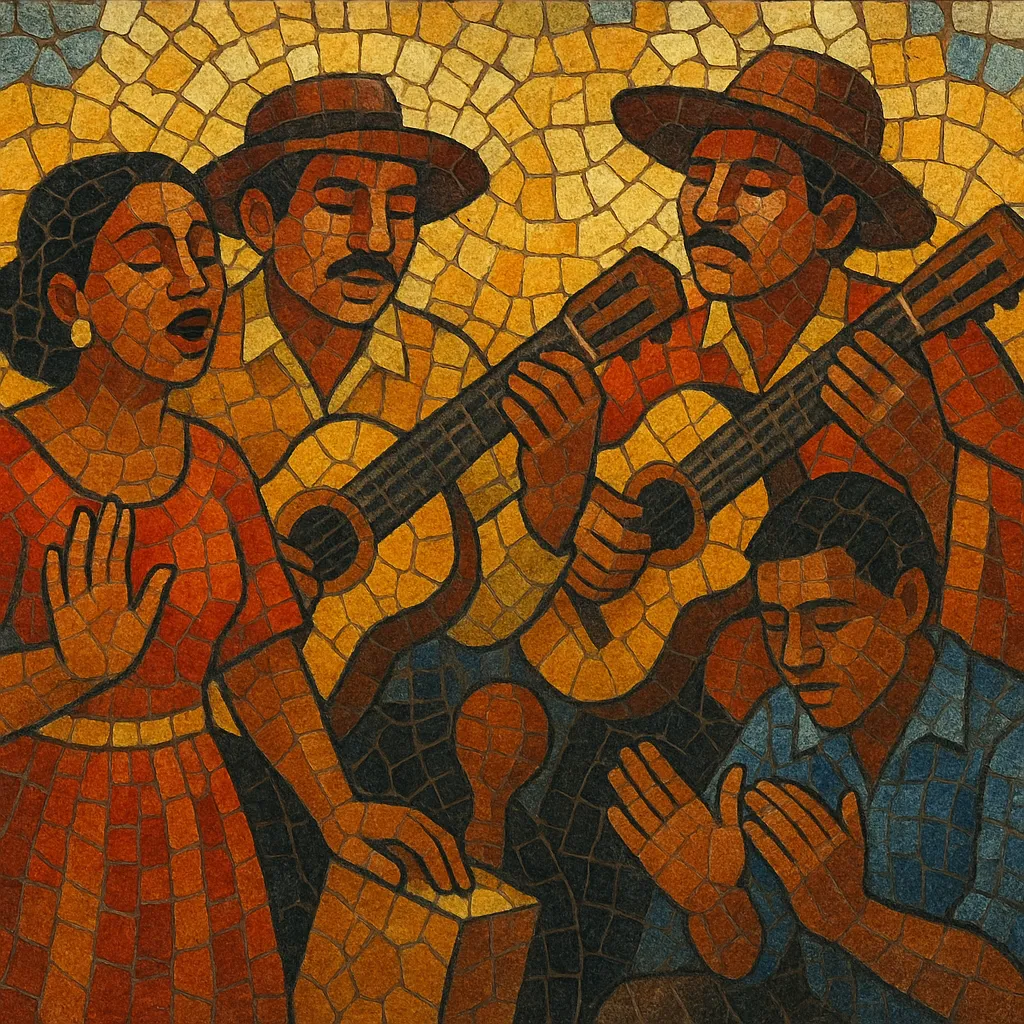Polca criolla is the Peruvian creole adaptation of the European polka, rendered in the coastal "música criolla" idiom of Lima and other coastal cities.
It is typically lively and festive, set in 2/4 meter with a buoyant, accentuated "oom-pah" feel, and performed with the signature coastal ensemble of guitars, cajón, handclaps (palmas), and often the quijada (donkey jawbone), with bright, agile vocals.
While formally rooted in salon dance traditions of the 19th century, polca criolla bears the rhythmic drive, street-party humor (picardía), and call-and-response performance style of Peruvian jaranas (house parties), making it a staple alongside vals criollo, marinera, and festejo in the broader criollo repertoire.
The polka reached Peru via European salon culture and traveling ensembles in the mid 1800s. In the coastal cities—especially Lima—local Creole and Afro-Peruvian musicians embraced the dance and reshaped it using their own ensemble practices (guitars, cajón, palmas) and a performance ethos grounded in the jarana (informal social music-making). By the 1860s–1870s, a distinctly Peruvian “polca criolla” style had emerged, keeping the 2/4 metric profile of the European model but infusing it with Peruvian strumming patterns, percussive phrasing, and vernacular singing.
As “música criolla” diversified, polca criolla stood alongside vals criollo and marinera as a popular dance-song form for urban festivities. Because it was quick, witty, and easy to dance, the polca became common at jaranas, cantinas, and neighborhood gatherings, where humorous, flirtatious, and costumbrista lyrics narrated everyday life.
With the rise of radio, labels, and variety programs, polca criolla gained national visibility. Guitar virtuosi and charismatic vocalists standardized ensemble formats (first and second guitars, cajón, palmas, occasional bass), introduced crisp intros and instrumental “falsetas,” and codified bright, upbeat tempos. The golden age of música criolla on radio showcased polcas alongside waltzes—solidifying the style in the national imagination.
Although later urban genres grew in prominence, polca criolla has persisted as a festive emblem of coastal identity. Contemporary criollo artists and peñas (live venues dedicated to música criolla) keep the repertoire alive, often updating arrangements while preserving the characteristic rhythmic snap, humorous delivery, and communal spirit that define the style.


